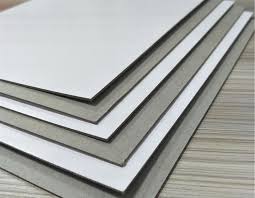- Home
- duplex board specification manufacturer
Nov . 22, 2024 17:26 Back to list
duplex board specification manufacturer
Understanding Duplex Board Specification A Comprehensive Guide for Manufacturers
In the world of packaging and printing, duplex board has become an essential material due to its versatility and suitability for various applications. Manufacturers seeking to customize and optimize their production processes must familiarize themselves with duplex board specifications. This article delves into the crucial aspects of duplex board specifications and how they impact manufacturing.
What is Duplex Board?
Duplex board is a type of paperboard made from a combination of recycled fibers and new fibers, resulting in a sturdy yet lightweight product. It is typically characterized by its two distinct layers—one side is coated to provide a smooth, printable surface, while the other side is uncoated, offering excellent strength and durability. This dual-layer structure makes duplex board a preferred choice for making cartons, packaging boxes, and other printed materials.
Key Specifications of Duplex Board
1. Basis Weight The basis weight of duplex board, measured in grams per square meter (gsm), is a critical specification that indicates the thickness and density of the board. Common basis weights for duplex board range from 200 gsm to 400 gsm, with heavier weights suitable for more robust packaging solutions. Manufacturers need to select the right basis weight based on their intended application and printing requirements.
2. Brightness Brightness refers to the amount of light reflected off the paper's surface. Duplex board typically has a brightness rating between 80% and 95%. A high brightness level is crucial for packaging that requires high-quality printing, as it enhances color vibrancy and sharpness. Manufacturers must consider the end use of the product when specifying brightness to ensure optimal results.
3. Opacity Opacity is another important specification, defining how much light passes through the board. Duplex board usually has an opacity of 80% to 95%, which helps prevent show-through when printed on. Manufacturers must evaluate the opacity needed for specific applications, especially in cases where double-sided printing is involved.
duplex board specification manufacturer

4. Smoothness The smoothness of the duplex board affects print quality significantly. A smoother surface allows for better ink transfer and more precise image reproduction. Duplex boards are typically measured on a Parker print-smoothness scale, with values ranging from 1 to 300. For high-quality printing, manufacturers often opt for smoother grades that enhance the finished product's aesthetics.
5. Finishing Options Duplex board can be treated with various finishes to enhance its properties further. Coatings such as gloss, matte, or silky finishes can provide additional protection against moisture and wear while improving printability. Manufacturers should consider these finishing options based on the intended use and shelf-life of the product.
6. Environmental Considerations With a growing emphasis on sustainability, manufacturers must consider using duplex board made from recycled materials. Specifying eco-friendly options can appeal to environmentally conscious consumers and align with regulatory requirements. Certifications such as FSC (Forest Stewardship Council) or PEFC (Programme for the Endorsement of Forest Certification) can also enhance a manufacturer’s reputation.
Choosing the Right Supplier
Selecting the right supplier for duplex board is a critical aspect of ensuring quality and consistency in production. Manufacturers should look for suppliers who provide detailed specifications and can offer customization based on specific needs. It's also essential to choose suppliers who are transparent about their sourcing practices, manufacturing processes, and environmental impact.
Conclusion
Understanding duplex board specifications is fundamental for manufacturers involved in packaging and printing. By taking into account factors such as basis weight, brightness, opacity, smoothness, and environmental considerations, manufacturers can effectively tailor their products to meet market demands. With an increasing focus on sustainability and quality, the right duplex board specification can significantly enhance both the performance and appeal of the final products. Thus, investing time in understanding and choosing the right duplex board is not just beneficial but vital for success in the competitive packaging industry.
Latest news
-
High-Quality Bathroom Cabinet Contact Paper – Durable & Stylish Leading Suppliers, Exporters, Manufacturers
NewsJul.08,2025
-
Premium Wood Contact Paper for Desk – Reliable Suppliers & Exporters
NewsJul.08,2025
-
Premium Contact Paper for Table Top – Durable & Stylish Surface Solution from Leading Manufacturer
NewsJul.07,2025
-
Duplex Board with Grey Back - Reliable Supplier & Competitive Price Manufacturer & Exporter
NewsJul.07,2025
-
Premium White Contact Paper on Cabinets – Trusted Exporters & Suppliers
NewsJul.06,2025
-
High-Quality Duplex Board Packaging for Food Reliable Manufacturer & Supplier
NewsJul.06,2025

